The Trombone History Timeline features 23 paintings from the Low Countries within the short span of approximately 35 years (1606-c. 1640) that include trombone. They are similar and noteworthy in several respects. Several of the artists, most notably Rubens and Brueghel, are very well known in art history. With the exception of 3 of the 22 paintings (Wedding at Cana by Frans Francken II, Procession of the Guilds by Alsloot, and Music Making Company by Bijlert), all of the images incorporate overt symbolism in the form of mythology or allegory. In terms of the trombone, one of the most striking things is that, while the paintings all include depictions of the instrument, none of them besides the Francken II and Alsloot actually show the trombone being played. The instrument is obviously acting as a symbol.
_______________
1606-09—Brussels, Belgium: Hendrick de Clerck’s painting, The Nuptials of Thetis and Peleus, features a group of musicians (upper-middle); among the musicians are several musical instruments resting on the ground, including what appears to be a trombone (see detail and full image below; public domain).
c. 1610—Belgium: Hendrick de Clerck’s painting, Minerva and the Muses, includes a trombone resting on some foliage in the foreground of the painting (see bottom-left of below image; click for larger image; public domain).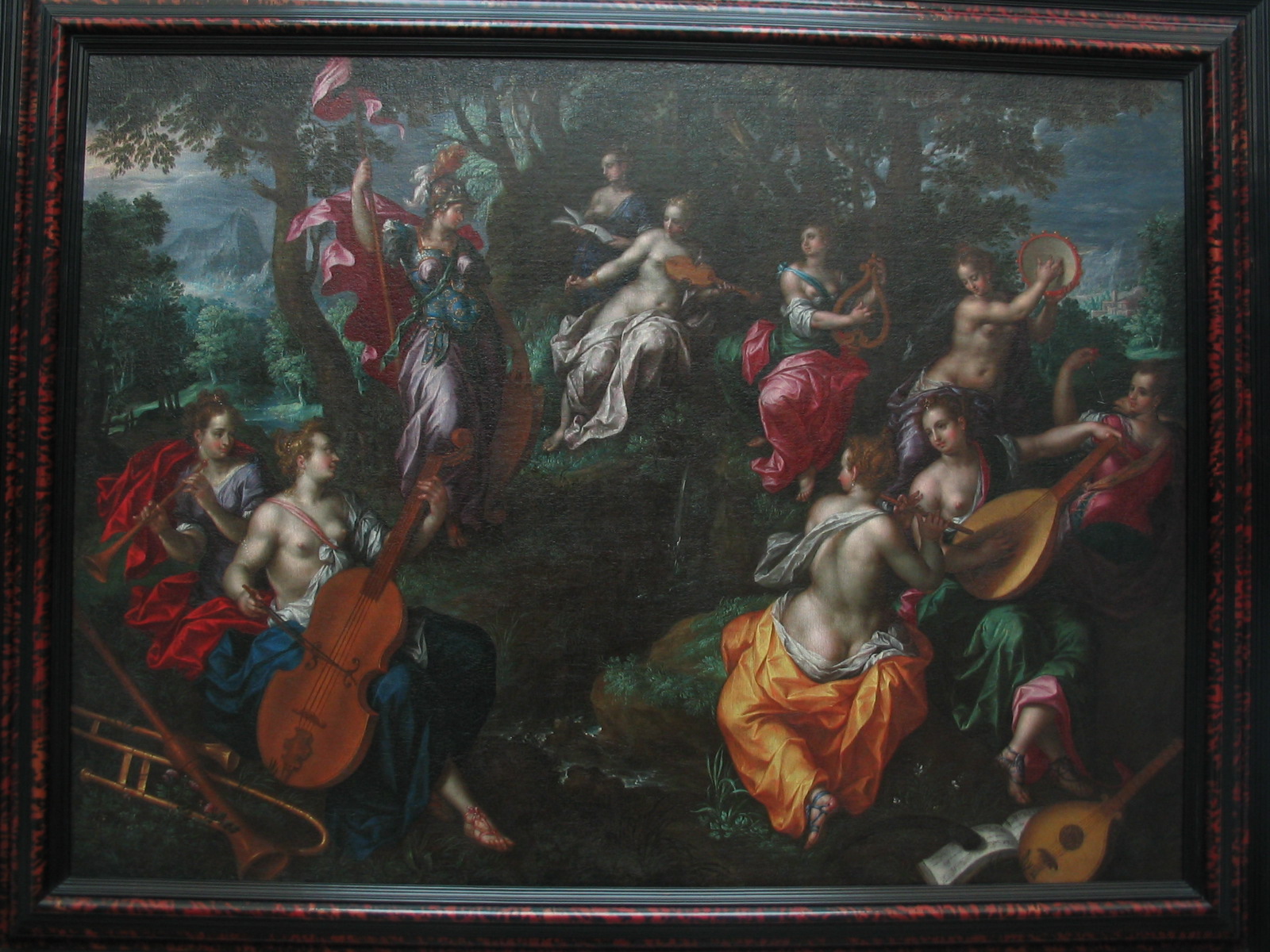
c. 1610—Antwerp, Belgium: Hendrick van Balen’s painting, The Banquet of the Gods, includes a trombone resting on the ground among several other instruments (see bottom right of below detail; public domain image).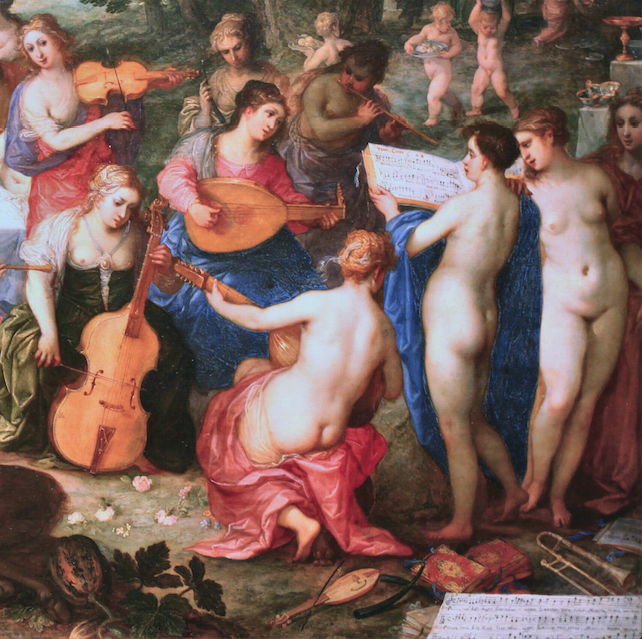
c. 1610—Apollon défié par Marsyas, a painting attributed to Frans Francken (1581-1642), includes a trombone resting on the ground (see below image; public domain) (National Library of France).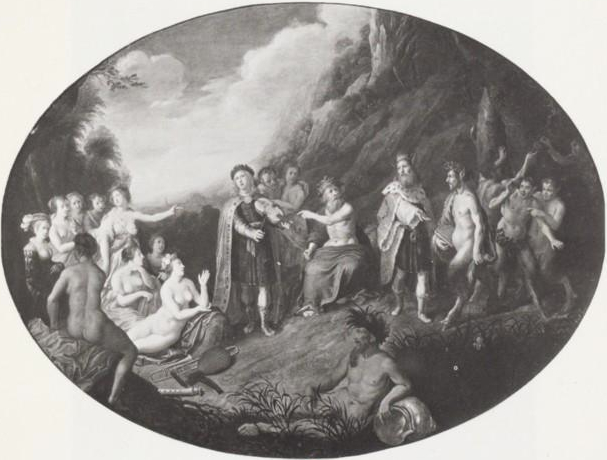
c. 1610—The Judgment of Midas, a painting by Flemish artist Adriaen van Stalbemt, includes a trombone. The trombone rests on the ground among several other instruments (see below image; public domain).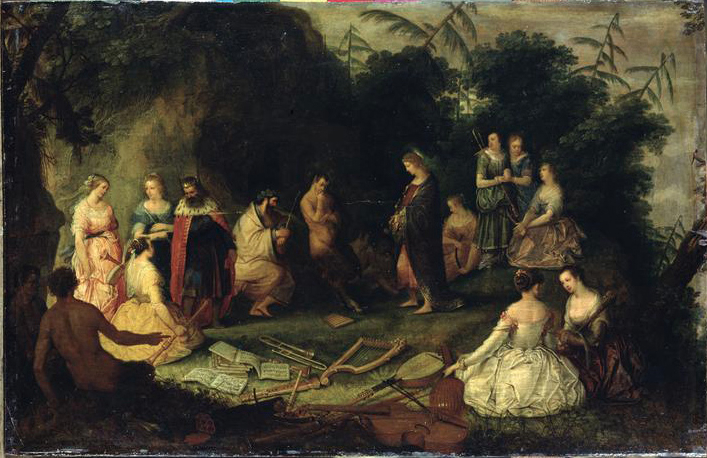
c. 1610—Flemish artist Adriaen van Stalbemt (1580-1662) includes a somewhat awkwardly-rendered trombone in his painting, Landschaft mit Minerva (see detail below; public domain) (National Library of France). 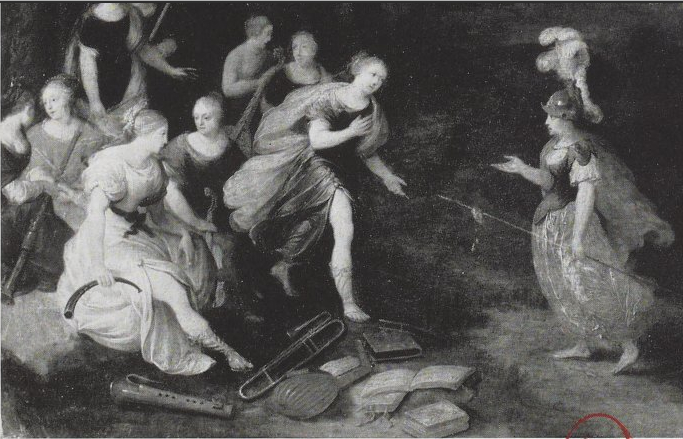
c. 1610—Wedding at Cana, a painting by Flemish artist Frans Francken II (1581-1642) depicts musicians playing trombone, bass viol, viola da braccio, lute, and cornetto (see below image; public domain) (French National Library).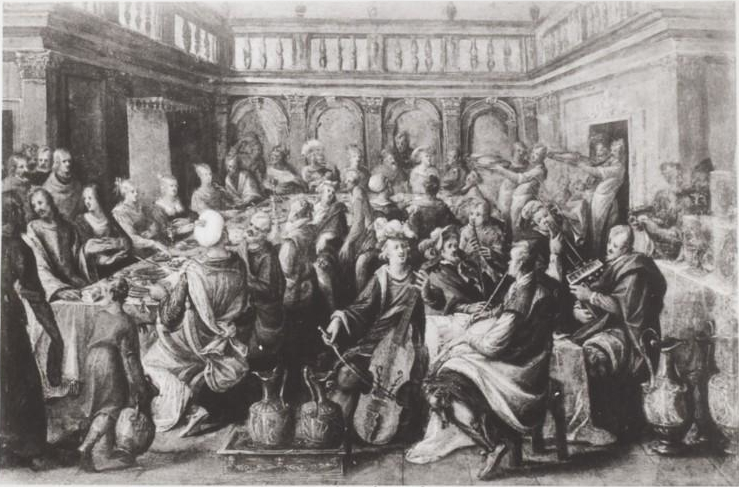
c. 1615—Belgium: Allegory of Music by Jan Brueghel the Elder includes a trombone among numerous instruments resting on the floor (see below image; public domain).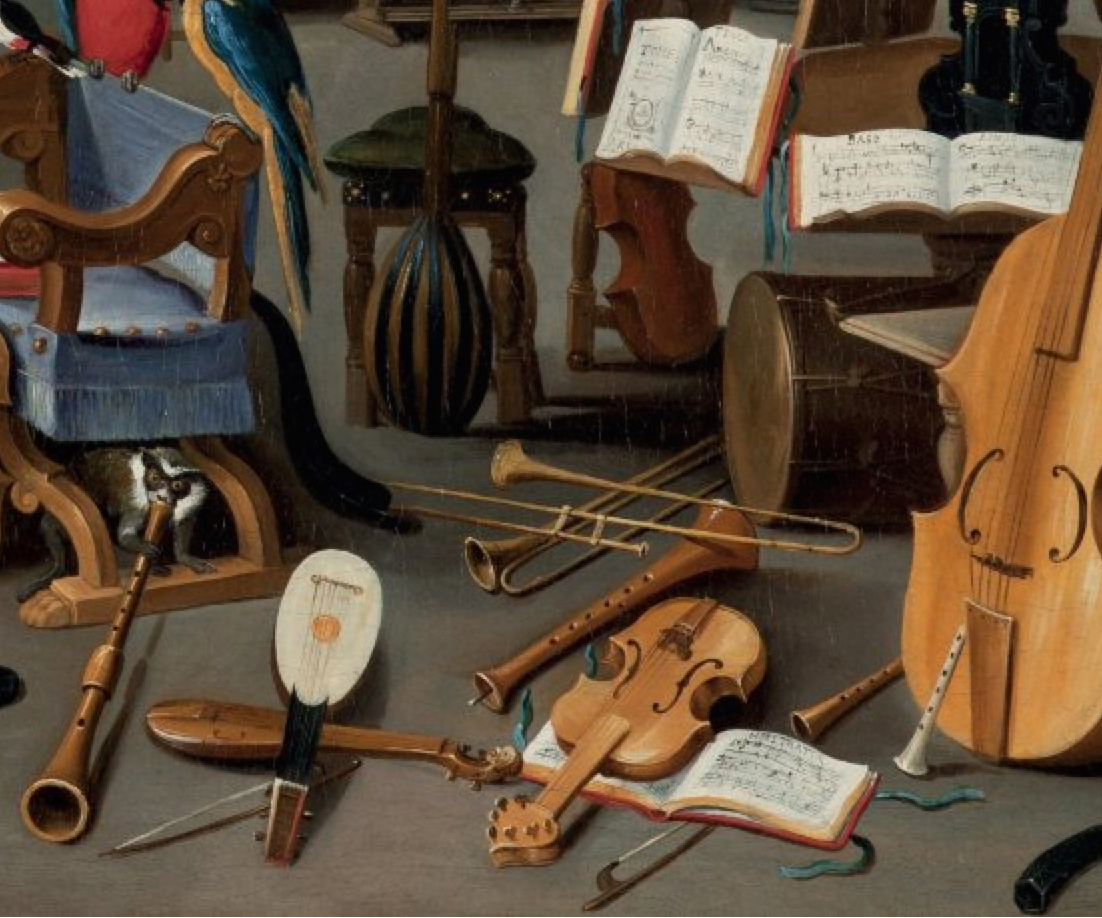
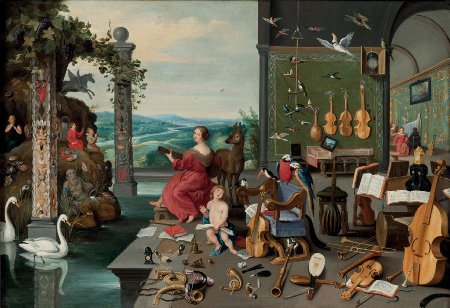
c. 1615—Antwerp, Belgium: Hendrick van Balen’s painting, Minerva among the Muses, on the cover of a virginal belonging to Queen Maria Kazimiera Sobieski, features a trombone among several instruments resting on the ground. The trombone is somewhat unusual because of the double loop of tubing on the back of the instrument, similar to the one portrayed by Brueghel and Rubens in Allegory of Hearing (1617-18). Queen Maria, originally from Poland, marries King James Stuart and spends most of her life in Rome. Hendrick van Balen, the artist, is a mannerist from the Antwerp School (see below image; public domain) (source: wikimedia commons).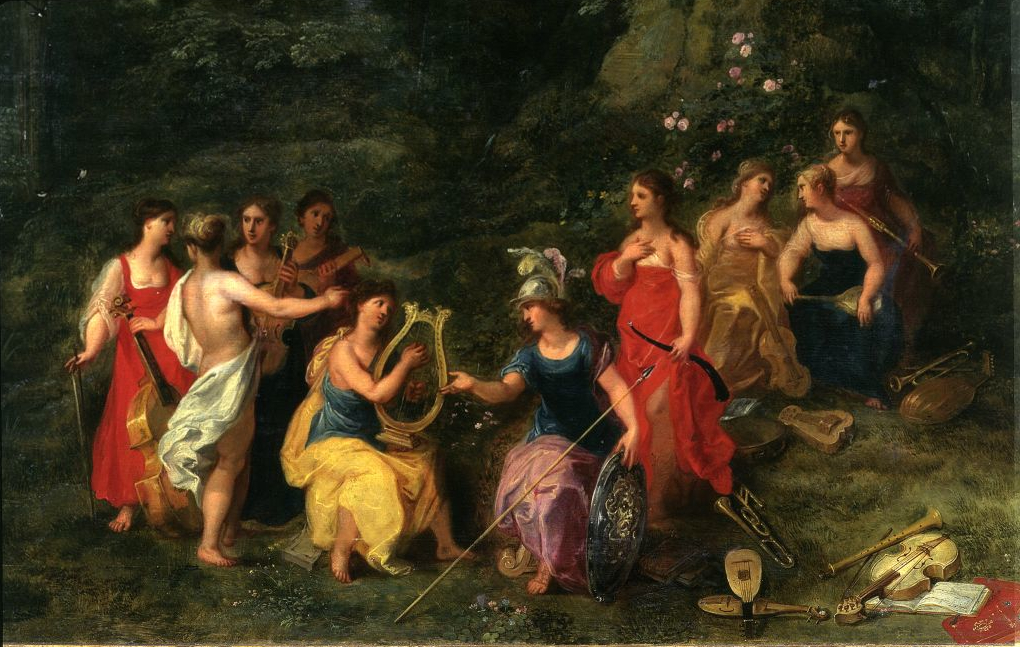
c. 1615—Antwerp, Belgium: Hendrick van Balen’s painting, Minerva and the Muses, includes a trombone among several musical instruments resting on the ground (see below image; public domain). See also the copy within Bruegel and Rubens, Allegory of Hearing (1617-1618, below).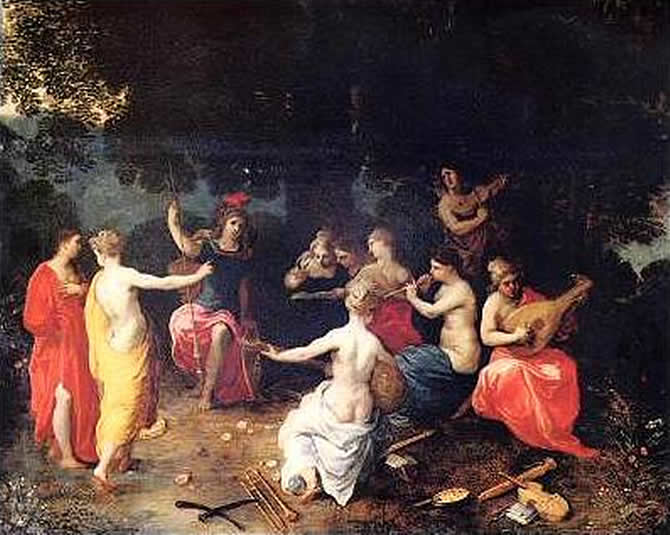
1615-16—Brussels, Belgium: Archduchess Isabella visits Brussels and subsequently commissions several paintings to portray the related celebrations. Denis van Alsloot, painter for the archdukes of Brussels, depicts a “procession of guilds.” The “loud” instruments pictured, which include a trombone, cornett, curtal, and 3 shawms, presumably constitute the civic wind band of Brussels. They occupy a place of honor between the relics and the statue (Denis van Alsloot, Procession en l’honneur de Notre-Dame du Sablon a Bruxelles le 31 mai,Museo Prado, Madrid) (see below detail—click for larger image; Lesure 94-95; Forney, Antwerp 363; Whitwell, Baroque 181; Wangermée, vol. 1 241; public domain image).
c. 1617—Antwerp, Belgium: Hendrick van Balen and Jan Brueghel collaborate on a painting called An Allegory of the Five Senses, which includes a trombone among several instruments in the foreground (see below detail; public domain) (Haeften, pl. 8). For other depictions of the trombone by the same painter, see c. 1610 (Banquet of the Gods), c. 1615 (Minerva among the Muses), and c. 1625 (Allegory of Music).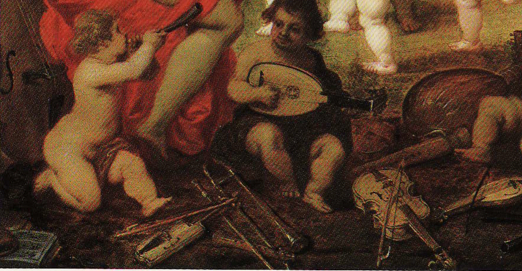 1617-1618—Antwerp, Belgium: Jan Brueghel the Elder and Peter Paul Rubens collaborate on a series of paintings on the subject of the 5 senses. The Sense of Hearing or Allegory of Hearing depicts a trombone among the many instruments in the room (see Detail 1, below). In the upper-left of the painting is a painting within a painting: a copy of Hendrick van Balen’s Minerva and the Muses, which also includes a trombone (see Detail 2, below and c. 1615, above). The full painting by Brueghel and Rubens is the third image below (images public domain) (Woollett, 91-92; Museo del Prado, Madrid).
1617-1618—Antwerp, Belgium: Jan Brueghel the Elder and Peter Paul Rubens collaborate on a series of paintings on the subject of the 5 senses. The Sense of Hearing or Allegory of Hearing depicts a trombone among the many instruments in the room (see Detail 1, below). In the upper-left of the painting is a painting within a painting: a copy of Hendrick van Balen’s Minerva and the Muses, which also includes a trombone (see Detail 2, below and c. 1615, above). The full painting by Brueghel and Rubens is the third image below (images public domain) (Woollett, 91-92; Museo del Prado, Madrid).
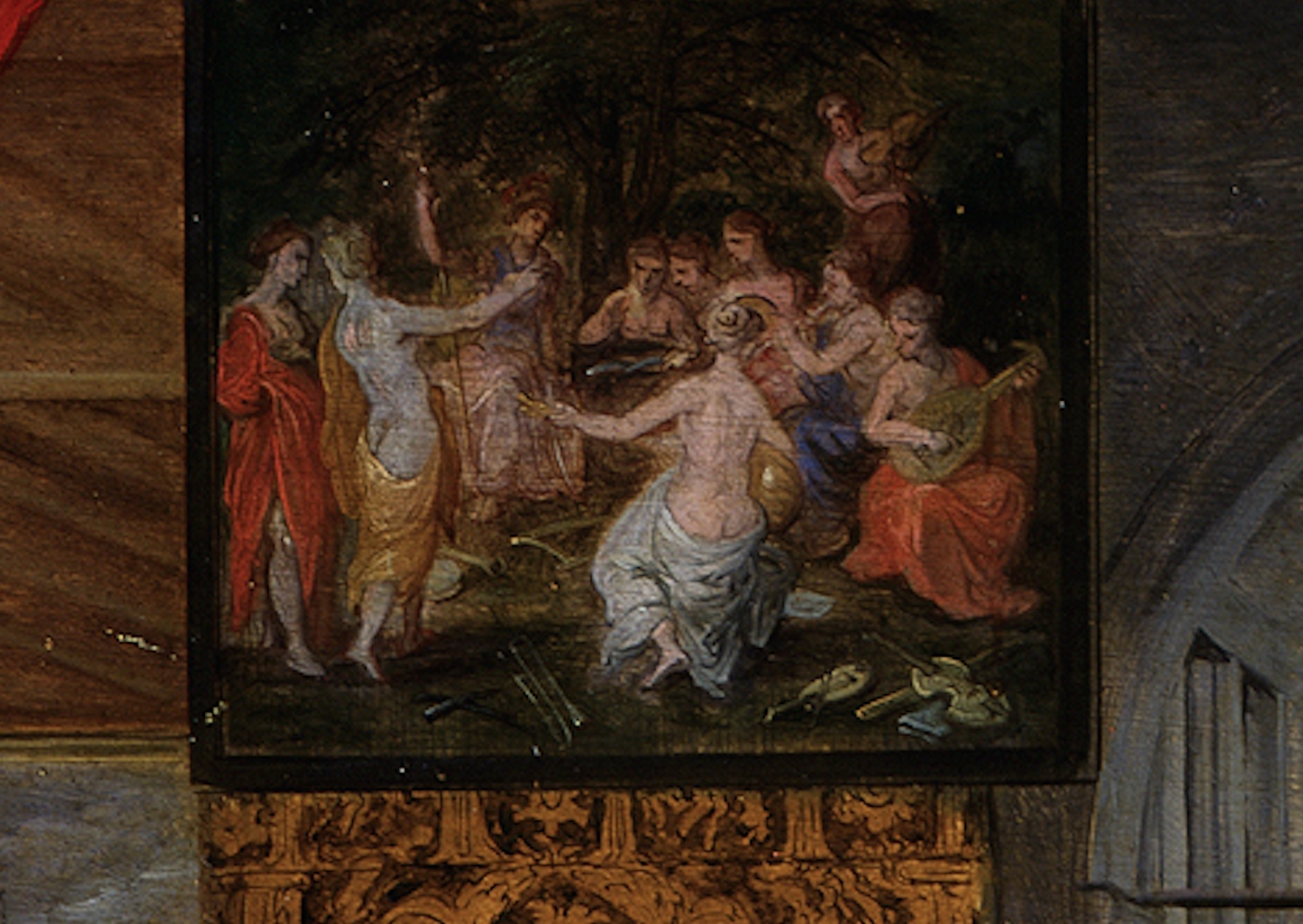
Detail 2 from upper-left of Breugel and Rubens, The Sense of Hearing or Allegory of Hearing, showing a painting-within-a-painting of Hendrick van Balen’s Minerva and the Muses (c. 1615).
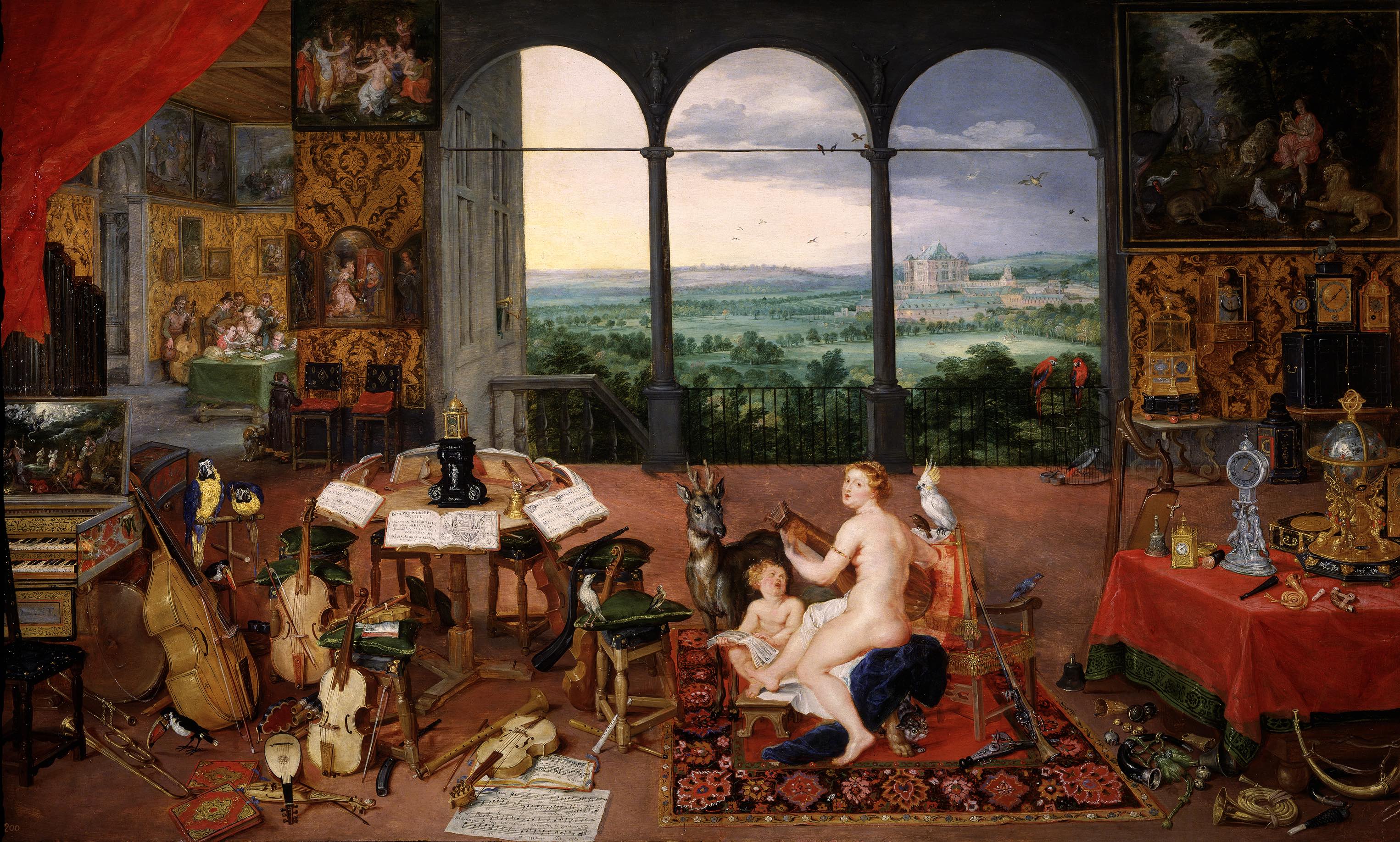
Jan Brueghel the Elder and Peter Paul Rubens, The Sense of Hearing or Allegory of Hearing (full painting).
1618—Belgium: Jan Brueghel includes a trombonist resting on the ground in his allegorical painting, Taste, Hearing, and Touch (see lower-left corner of detail and full image below; public domain).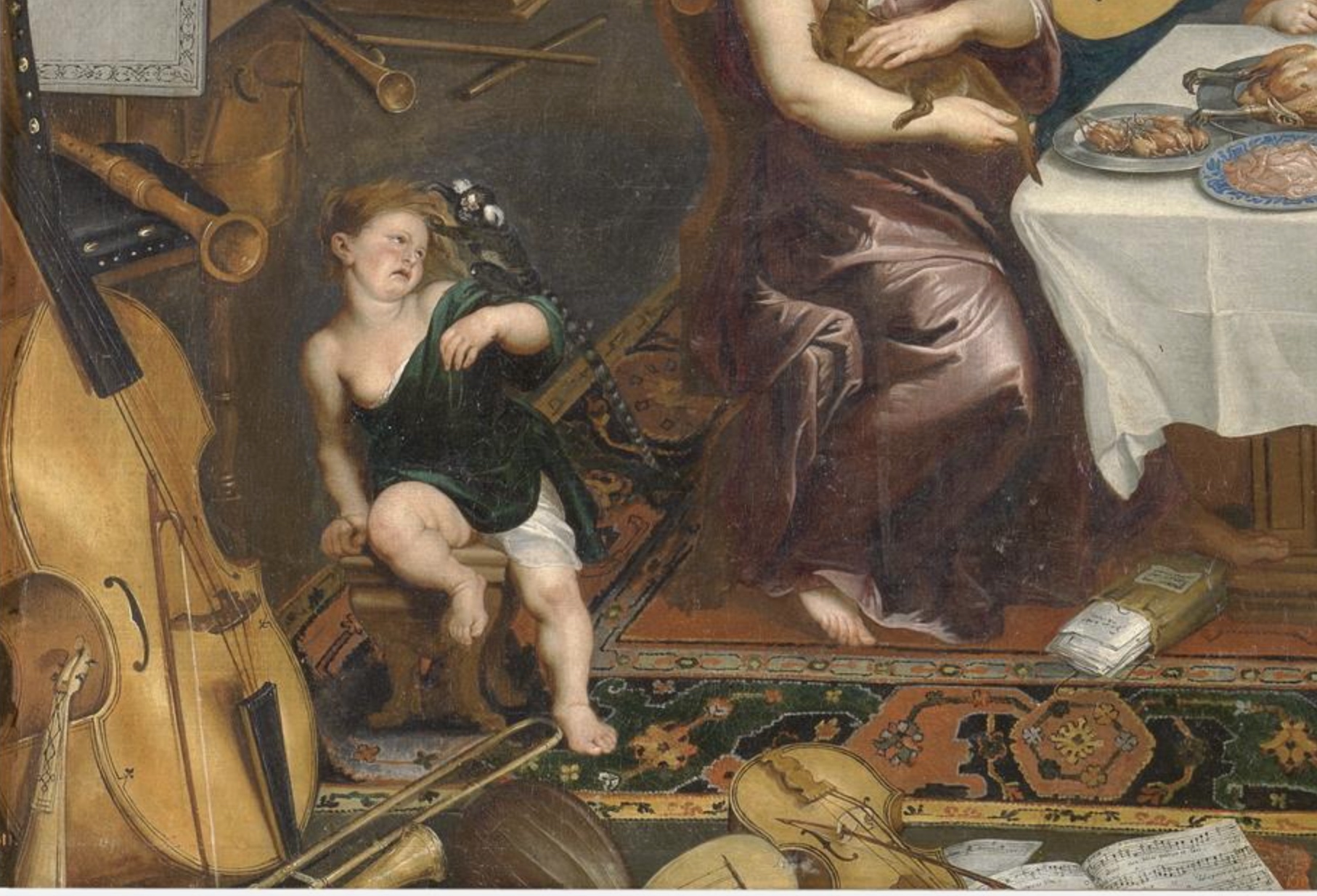
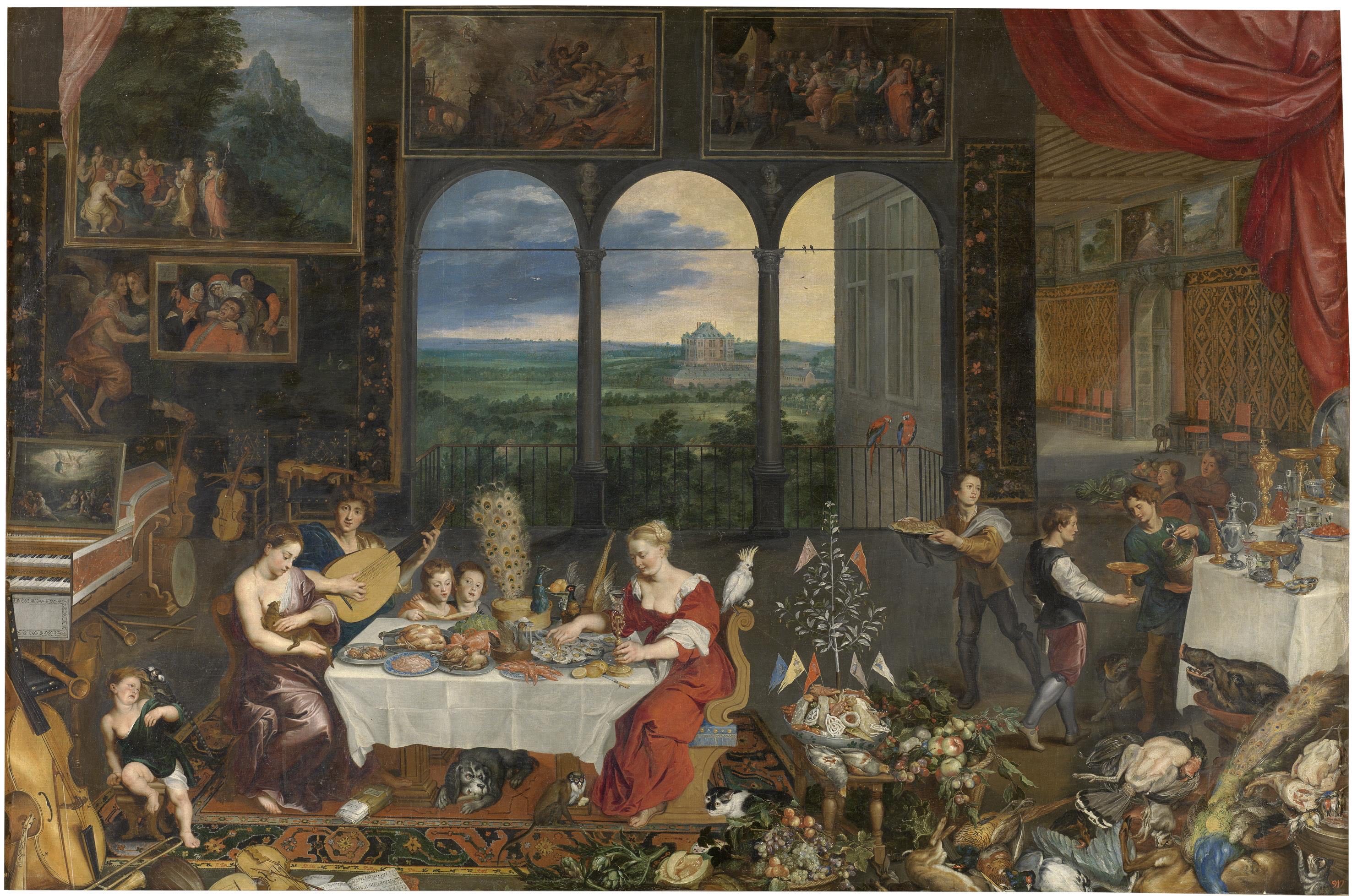
c. 1620—Antwerp, Belgium: In a painting called Minerva Visits the Nine Muses, attributed to Hendrick van Balen and Jan Brueghel the Elder, a trombone rests upon the ground among several other musical instruments (see below image; public domain).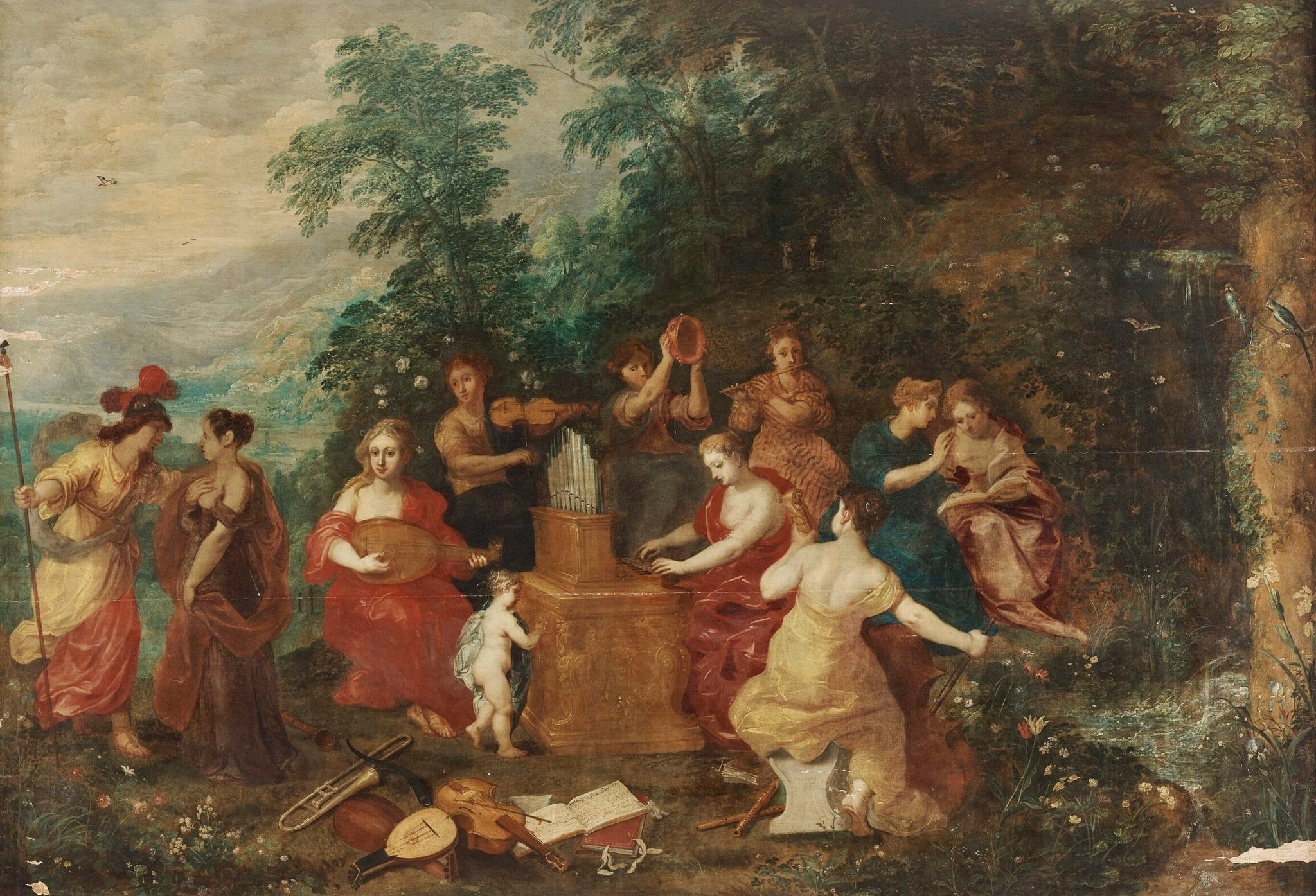
c. 1625—Belgium: A painting attributed to Jan van Kessel, Hendrik van Balen, and Jan Brueghel titled Allegory of Music features depictions of numerous instruments, including trombone (see below detail; public domain) (Wangermée vol. I, 292; Saint-Germain-en-Laye, Musée municipal).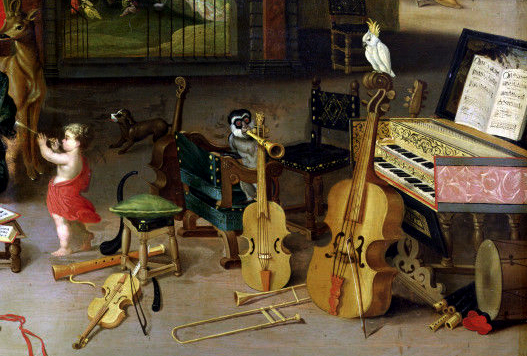
c. 1625—Antwerp, Belgium: Hans Tilens’s painting, Concert des Muses, includes a trombone resting on the ground (see detail and lower-middle of full image below; public domain) (National Library of France).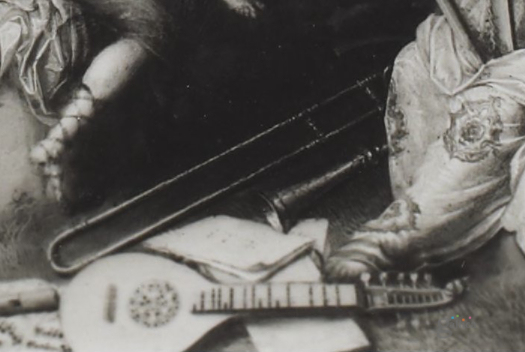
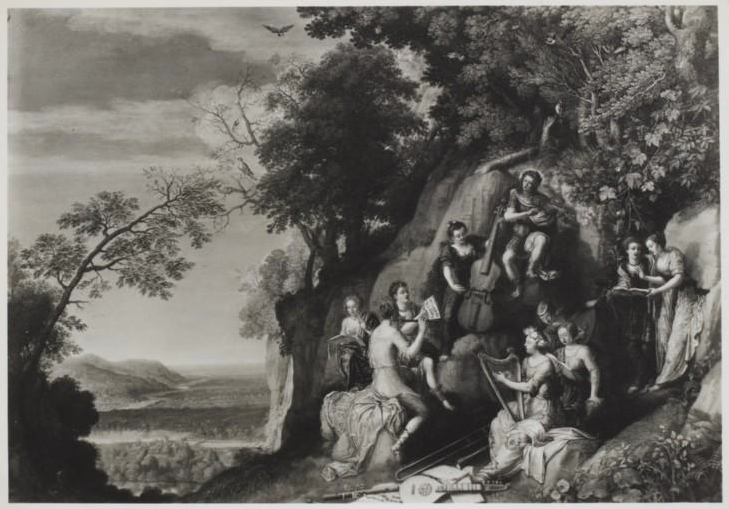
1625-1630—Belgium: The Royal Palace at Brussels, a paintingattributed to Sebastian Vranckx and Jan Brueghel the Younger, includes a depiction of a trombone. The trombone rests on the ground, along with a dulcian, near an ensemble of 2 voices and 3 strings that is informally performing outdoors (see below image; public domain) (Kenyon de Pascual, Two Contributions).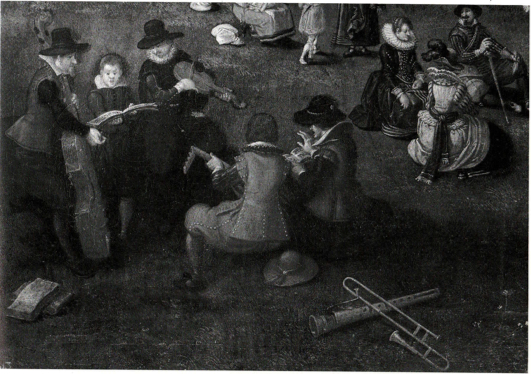
c. 1629—Utrecht, Netherlands: Jan van Bijlert’s Music Making Company includes a trombone resting on the floor (see bottom-left of below image; public domain).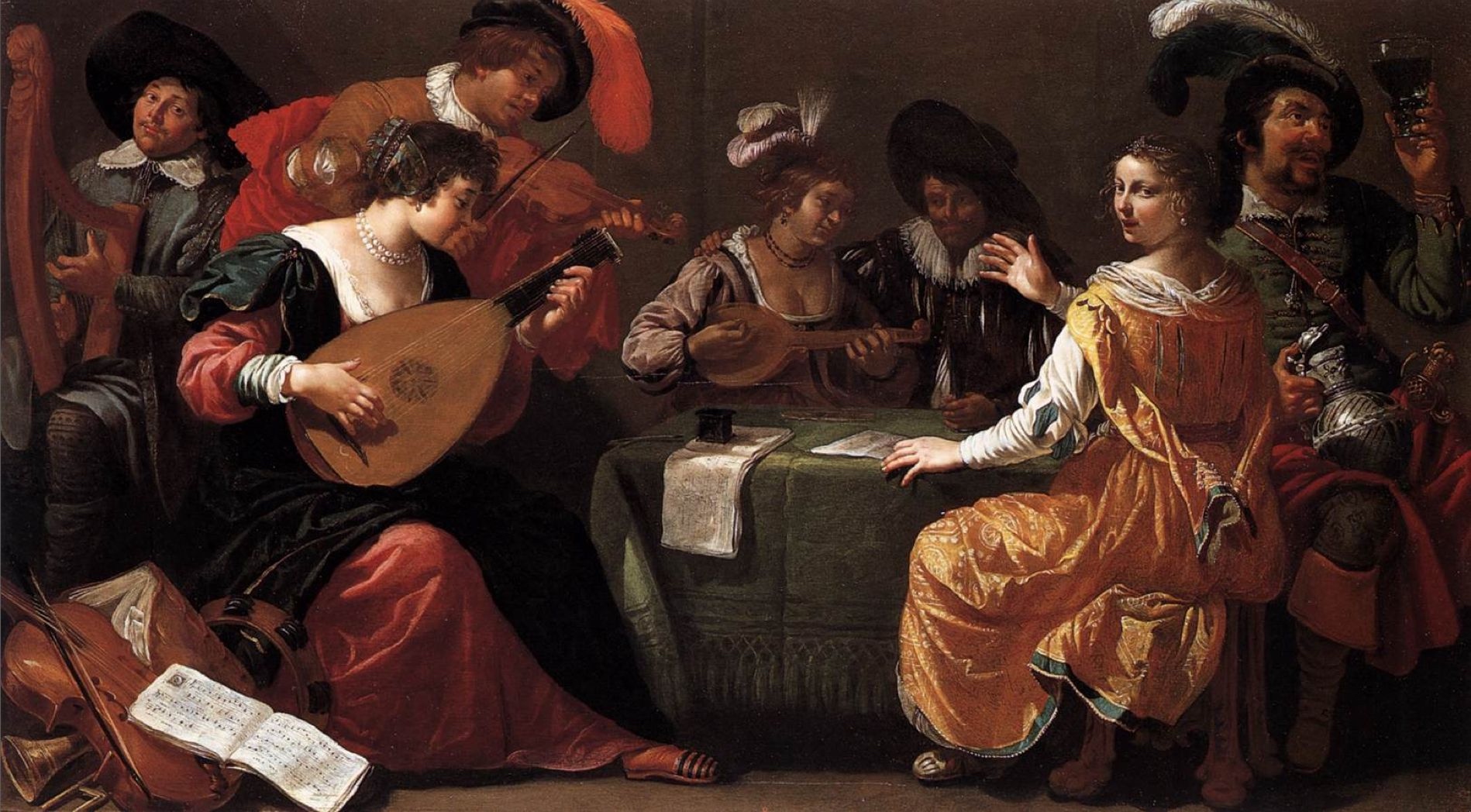
c. 1630—Antwerp, Belgium: Minerva Visiting the Muses on Mount Helicon, a painting by Hans III Jordaens, includes a trombone and a viol resting on the ground in front of Minerva (see below image; public domain).![]()
1639—Adriaen van Stalbemt, a Flemish Baroque artist from Antwerpt, paints Midas Listening to Apollo, which includes a trombone among several other instruments resting on the ground (see below image; public domain).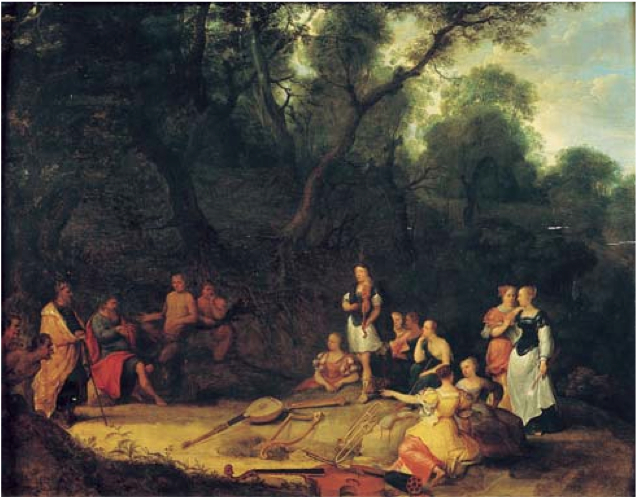
c. 1640—Antwerp, Belgium: Jan van Kessel’s Allegory of Hearing depicts a room with numerous instruments, including a trombone leaning against a stool (see below detail; public domain). The image is similar to a painting on which the artist collaborated with Hendrik van Balen and Jan Brueghel (see c. 1625, above).
c. 1640—Antwerp, Belgium: Flemish artist Thomas Willeboirts Bosschaert (1614-54) paints Amor Triumphant among Emblems of Art, Science, and War, which includes a trombone in the foreground (see below image; public domain) (Wikimedia commons; Heinrich 507; National Museum, Stockholm).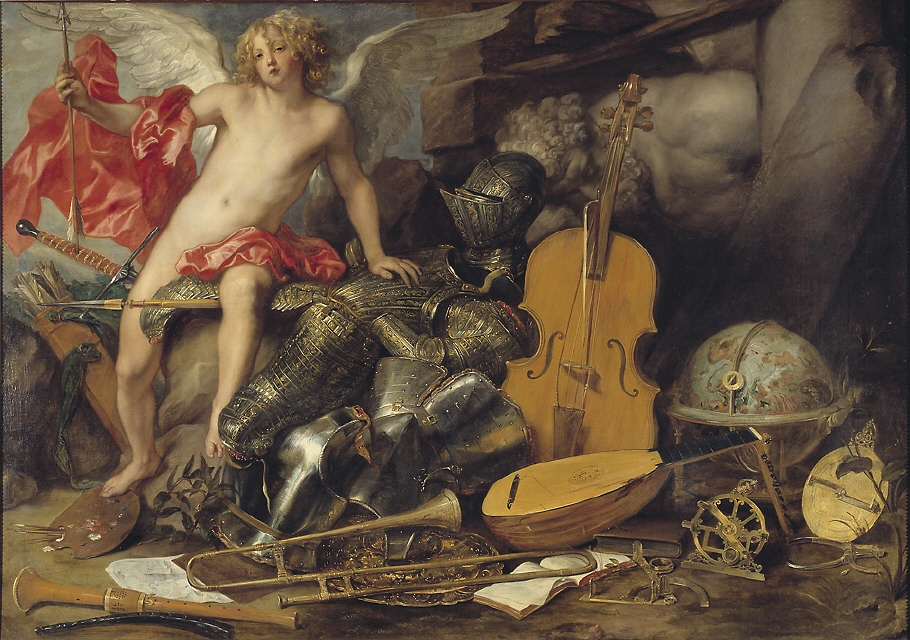
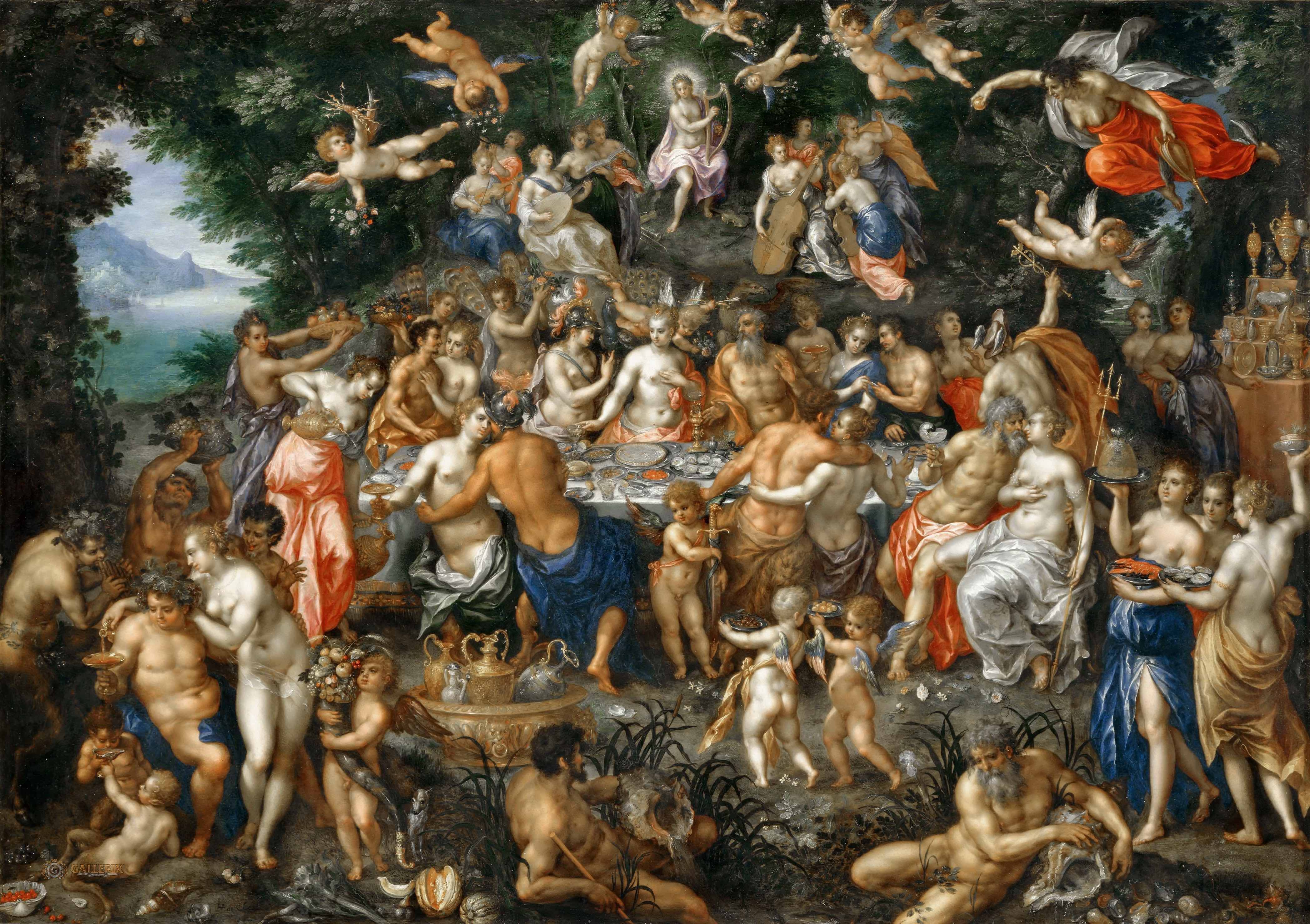
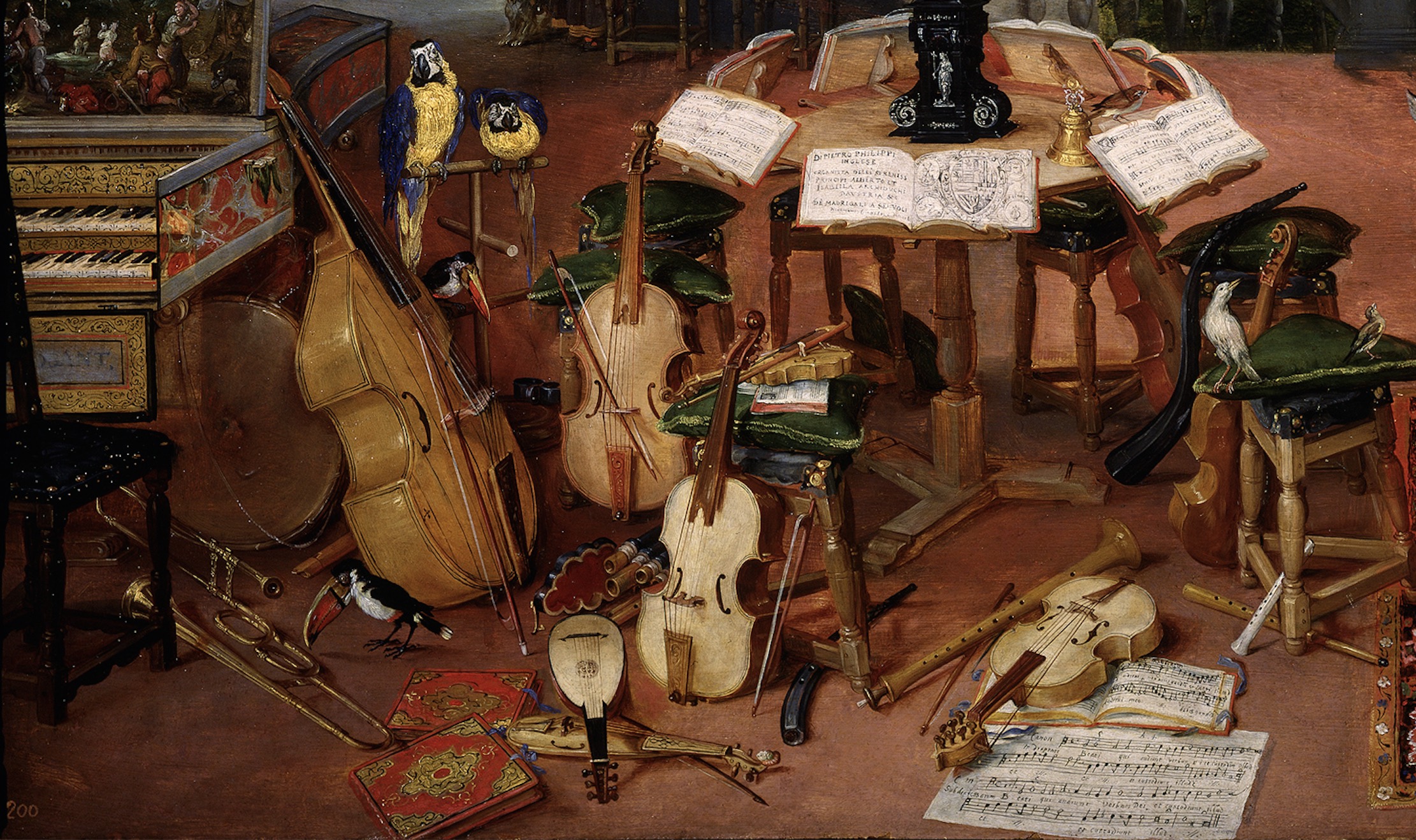
Jon
Some wonderful paintings! Especially like the one with “trombone (maybe a sackbutt?), cornett, curtal, and 3 shawms”. Very interesting!
wkimball
Thanks, Jon! I like that one too. As I mention in the Timeline Intro (under “Terminology”), I don’t distinguish between sackbut and trombone–don’t see any clear distinction or particular benefit. Anyway, glad you enjoyed the paintings!
Elena
What’s a nice mandores! (little lutes). There are 4-strings, 6-strings in the pictures. I play them. Thank you very much!